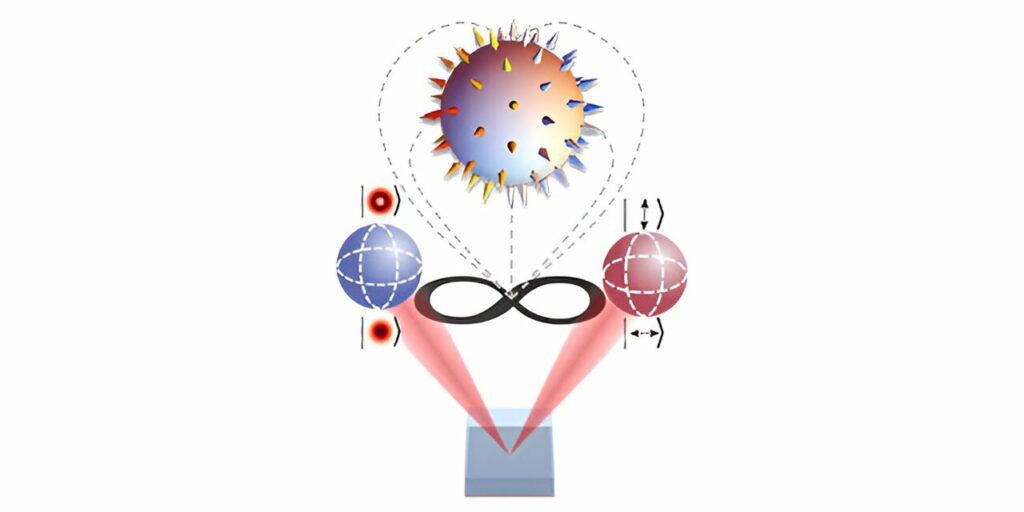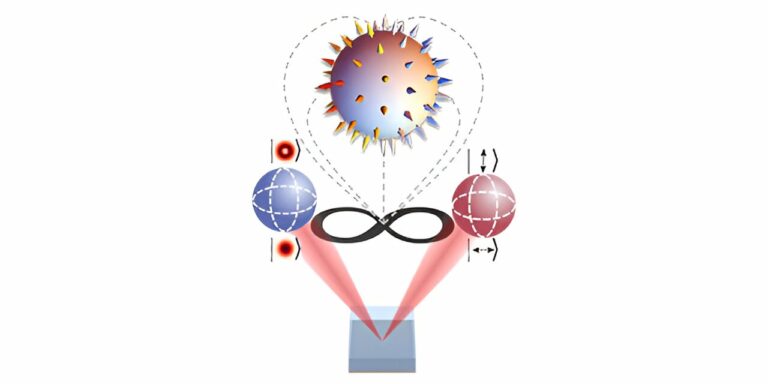Scientists illustrate the inseparable connection between quantum entanglement and topology.
For the first time, researchers have successfully demonstrated the extraordinary capability to disturb pairs of quantum entangled particles that are spatially separated yet interconnected, all while preserving their shared properties. The team involved in this groundbreaking achievement hails from the Structured Light Laboratory (School of Physics) at the University of the Witwatersrand in South Africa, led by Professor Andrew Forbes. They collaborated with string theorist Robert de Mello Koch from Huzhou University in China, who was previously associated with Wits University.
The key to this experimental milestone was entangling two identical photons and customizing their shared wave-function. This customization was done in a manner that revealed their topology or structure only when the photons were treated as a unified entity, as explained by lead author Pedro Ornelas, an MSc student in the structured light laboratory. Quantum entanglement, often described as “spooky action at a distance,” established the connection between the photons, allowing particles to influence each other’s measurement outcomes even when separated by considerable distances.
The findings of this research were published in Nature Photonics on January 8, 2024. In the context of this work, the role of topology and its ability to preserve properties can be compared to reshaping a coffee mug into the form of a doughnut. Despite the changes in appearance and shape during the transformation, a singular hole—a topological characteristic—remains constant and unaltered. Professor Forbes elucidates that the entanglement between the photons is akin to clay in a potter’s hands, malleable during the molding process, yet retaining certain features.

The Skyrmion topology under investigation, originally explored by Tony Skyrme in the 1980s, involves field configurations exhibiting particle-like characteristics. In this context, topology refers to a global property of the fields, comparable to a piece of fabric (the wave-function) whose texture (the topology) remains unaltered regardless of the direction in which it is pushed.
These ideas have been realized in contemporary magnetic materials, liquid crystals, and optical analogs using classical laser beams. In the field of condensed matter physics, skyrmions are esteemed for their stability and resistance to noise, leading to groundbreaking advancements in high-density data storage devices. Professor Forbes expresses the hope for a similar transformative impact with their quantum-entangled skyrmions. Prior research depicted Skyrmions as localized at a single location.
However, the current work represents a paradigm shift, revealing that the traditionally assumed single and local configuration of topology is now nonlocal or shared between spatially separated entities, according to Ornelas. Building on this notion, the researchers use topology as a framework to categorize or differentiate entangled states.
Dr. Isaac Nape, a co-investigator, envisions that this fresh perspective can function as a labeling system for entangled states, similar to an alphabet. Nape explains that just as spheres, doughnuts, and handcuffs are distinguished by the number of holes they contain, quantum skyrmions can be discerned by their topological aspects. The team anticipates that this could become a powerful tool, laying the groundwork for new quantum communication protocols that utilize topology as an alphabet for quantum information processing across entanglement-based channels.
The reported findings are crucial as researchers have struggled for decades to develop techniques preserving entangled states. The fact that topology remains intact even as entanglement decays suggests a potentially new encoding mechanism utilizing entanglement. This holds promise, especially in scenarios with minimal entanglement where traditional encoding protocols would falter. Professor Forbes emphasizes that their research focus will center on defining these new protocols and expanding the landscape of topological nonlocal quantum states.
This article is republished from PhysORG under a Creative Commons license. Read the original article.
Do not forget to share your opinion with us to provide you with the best posts !




0 Comments